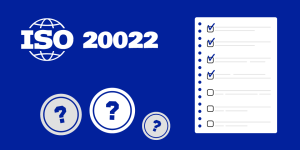Blockchain technology has revolutionized various industries by providing decentralized and transparent solutions. However, as its popularity continues to grow, scalability and performance have become major concerns. The Boba Network, a layer-2 scaling solution built on the Ethereum blockchain, aims to address these challenges.
In this Cryptopolitan guide, we will explore the top 10 tools on the Boba Network that enhance blockchain scalability and performance.
Boba Network Explorer
The Boba Network Explorer serves as a window into the blockchain’s activity, offering insights and transparency to users, developers, researchers, and other stakeholders. It displays information in a user-friendly and intuitive manner, making it easy to navigate and understand the network’s performance.
Key features of the Boba Network Explorer may include:
Transaction Tracking: This feature enables users to monitor the progress and confirmation of their transactions on the Boba Network.
Block Explorer: The Boba Network Explorer allows users to explore blocks on the network. It displays information about the latest blocks, including block height, timestamp, block hash, and the number of transactions included in each block. Users can track the progress of block confirmations and verify the integrity of the blockchain.
Smart Contract Exploration: Users can access information about smart contracts deployed on the Boba Network. They can view contract addresses, contract code, and contract interactions. This feature enables developers to analyze smart contracts and verify their functionalities.
Network Statistics: The Boba Network Explorer provides real-time network statistics, such as the total number of transactions, the number of active addresses, block confirmation times, and network hash rate. These statistics offer insights into the network’s performance, scalability, and overall health.
Address Monitoring: Users can track specific addresses on the Boba Network, allowing them to monitor the transaction history, balances, and activities associated with those addresses. This feature is useful for individuals and businesses that want to keep a close eye on their accounts or track specific addresses of interest.
Boba Network Wallet
The Boba Network Wallet is a software application or digital wallet designed specifically for the Boba Network. It allows users to securely store, send, and receive tokens on the network. Similar to other cryptocurrency wallets, the Boba Network Wallet provides a user-friendly interface for managing digital assets and interacting with the Boba Network’s features and functionalities.
Key features and capabilities of the Boba Network Wallet may include:
Token Storage: The Boba Network Wallet enables users to store their tokens securely. It generates and manages cryptographic keys, which are used to access and control the tokens associated with the user’s wallet address.
Token Transactions: Users can send and receive tokens on the Boba Network using the wallet. They can initiate transactions by specifying the recipient’s wallet address and the amount of tokens to be sent. The wallet facilitates the secure signing and broadcasting of transactions to the Boba Network.
Wallet Address Management: The Boba Network Wallet allows users to manage multiple wallet addresses within a single interface. This feature is particularly useful for individuals or businesses that want to separate and organize their token holdings or track different accounts.
Security Features: The wallet emphasizes security measures to protect user funds. It may include features such as encryption of private keys, backup and recovery options, and support for hardware wallets or other external security devices. These security measures help prevent unauthorized access and ensure the safety of tokens stored in the wallet.
User-Friendly Interface: The Boba Network Wallet offers a user-friendly interface that simplifies the management of tokens and the execution of transactions. It may include features such as transaction history, balance tracking, and customizable settings to enhance the user experience.
Boba Network Bridge
The Boba Network Bridge is a crucial component of the Boba Network ecosystem. It acts as a connection or gateway between the Ethereum mainnet and the Boba Network, enabling the seamless transfer of assets between the two networks. The bridge facilitates interoperability and enhances liquidity by allowing users to move tokens back and forth.
Here’s how the Boba Network Bridge typically works:
Depositing Assets: Users who hold tokens on the Ethereum mainnet can deposit them into the Boba Network Bridge. This involves sending the tokens from their Ethereum wallet to a designated address associated with the bridge.
Locking and Tokenization: Once the tokens are deposited, the bridge locks them on the Ethereum mainnet. This ensures that the deposited tokens are securely held and cannot be accessed or transferred while they are on the Boba Network.
Minting Tokens on the Boba Network: After the tokens are locked on the Ethereum mainnet, an equivalent representation of those tokens, known as wrapped tokens or bridged tokens, is minted on the Boba Network. These wrapped tokens mirror the locked tokens on the Ethereum mainnet and can be freely used within the Boba Network.
Utilizing Tokens on the Boba Network: With the bridged tokens on the Boba Network, users can utilize them for various purposes, such as engaging in transactions, participating in decentralized applications (dApps), or leveraging the network’s scalability and performance benefits.
Withdrawing Assets: When users want to move their tokens back to the Ethereum mainnet, they initiate a withdrawal request on the Boba Network Bridge. The bridge verifies the request and burns the corresponding bridged tokens on the Boba Network.
The Boba Network Bridge plays a crucial role in promoting liquidity, facilitating seamless asset transfer, and maintaining a strong connection between the Ethereum mainnet and the Boba Network. It enhances the versatility and utility of tokens by enabling their fluid movement between these two interconnected networks.
Boba Network SDK
The Boba Network SDK (Software Development Kit) is a collection of tools, libraries, and documentation that developers can use to build decentralized applications (dApps) on the Boba Network. It provides a comprehensive set of resources and functionalities to simplify the development process and enable seamless integration with the Boba Network’s infrastructure.
Key components and features of the Boba Network SDK may include:
Libraries and APIs: The SDK includes libraries and APIs that developers can utilize to interact with the Boba Network. These libraries provide pre-built functions and modules that abstract the underlying complexities of the network’s protocols, allowing developers to focus on building their dApps rather than low-level implementation details.
Smart Contract Development: The Boba Network SDK may include tools and frameworks for developing smart contracts specifically designed for the Boba Network. It can provide a set of development and testing utilities, such as contract deployment scripts, unit testing frameworks, and debugging tools, to aid developers in creating and deploying secure and efficient smart contracts.
Integration with Existing Tools: The SDK may offer integration capabilities with popular development tools and environments, such as IDEs (Integrated Development Environments) and code editors. This allows developers to seamlessly incorporate the Boba Network SDK into their existing workflows and development environments, enhancing productivity and ease of use.
Documentation and Tutorials: The SDK typically includes detailed documentation, guides, and tutorials that provide developers with instructions on how to use the various components of the SDK effectively. It may cover topics such as setting up the development environment, interacting with the Boba Network APIs, and implementing specific features within dApps.
Testing and Debugging Support: The Boba Network SDK may provide tools and utilities for testing and debugging dApps built on the Boba Network. This can include features like automated testing frameworks, network simulation tools, and logging and debugging facilities to help developers identify and resolve issues during the development and deployment phases.
Boba Network Validator
The Boba Network Validator is a key participant in the Boba Network’s consensus mechanism and plays a crucial role in ensuring the security and integrity of the network. Validators are responsible for validating and confirming transactions on the Boba Network, maintaining consensus among network participants, and securing the network against malicious activities.
Here are some important aspects of the Boba Network Validator:
Proof-of-Stake (PoS) Consensus: The Boba Network utilizes a PoS consensus mechanism, which means that validators are selected based on the number of tokens they hold and are willing to stake as collateral. Validators who hold and stake a significant amount of tokens have a higher chance of being chosen to validate and confirm transactions.
Transaction Validation: Validators on the Boba Network validate transactions by checking the authenticity, correctness, and adherence to network rules. They verify that the sender has sufficient funds, the transaction has a valid signature, and all other transaction parameters are valid.
Block Creation: Validators also participate in block creation. Once a validator has validated a set of transactions, they have the opportunity to create a new block by including these transactions. This process involves collecting transactions, ordering them, and appending them to the blockchain.
Network Governance: Validators often play a role in the governance of the Boba Network. They may participate in voting processes to decide on important network parameters, protocol upgrades, and policy changes. Validators who actively participate in governance contribute to the evolution and improvement of the network over time.
Staking and Incentives: Validators stake their tokens as collateral to demonstrate their commitment to the network’s security and reliability. In return for their participation and commitment, validators earn rewards in the form of additional tokens. This incentivizes validators to act in the network’s best interest and maintain the network’s security and stability.
Boba Network Faucet
The Boba Network Faucet is a tool that provides users with a way to obtain test tokens or small amounts of real tokens for development, testing, or learning purposes on the Boba Network. It serves as a resource for developers and users who want to experiment with the network’s features without the need to acquire tokens from other sources.
Here’s how the Boba Network Faucet typically works:
Test Tokens: In a test environment, the Boba Network Faucet offers test tokens that are specifically designed for testing and development purposes. These tokens hold no real-world value and are used solely for experimentation and familiarization with the Boba Network’s functionalities.
Real Tokens: In certain instances, the Boba Network Faucet may also provide small amounts of real tokens to users. These real tokens have actual value and can be used for limited real-world transactions or to explore the network’s capabilities.
Application Process: Users typically need to go through a process to request tokens from the faucet. This may involve providing a wallet address or other relevant information to receive the tokens. The exact process and requirements may vary depending on the specific implementation of the Boba Network Faucet.
Token Distribution: Once the user’s request is approved, the Boba Network Faucet distributes the requested tokens to the provided wallet address. This allows users to have access to the desired tokens for their testing or learning purposes.
Boba Network API
The Boba Network API (Application Programming Interface) is a set of protocols, tools, and endpoints that allow developers to interact with the Boba Network programmatically. It provides a standardized way for external applications, services, or developers to access and utilize the functionalities and data offered by the Boba Network.
The Boba Network API offers various endpoints and methods that enable developers to perform operations such as:
Transaction Management: Developers can use the API to submit new transactions to the Boba Network, retrieve transaction details, monitor transaction status, and receive notifications or callbacks when transactions are confirmed or included in blocks.
Block Information: The API provides access to block-related information, including block height, timestamp, hash, and the list of transactions included in each block. This allows developers to track the progress of the blockchain, retrieve historical data, and analyze network performance.
Token and Account Information: Developers can retrieve information about specific tokens, such as token balances, token metadata, and token contract details. They can also access account-specific data, such as account balances, transaction history, and account-related information.
Network Statistics: The Boba Network API may offer endpoints to access network statistics and metrics. This can include information such as the total number of transactions, active addresses, block confirmation times, gas fees, and other network-related data. These statistics provide insights into the network’s health, performance, and usage patterns.
Integration with External Services: The Boba Network API may support integration with external services or platforms, allowing developers to interact with other blockchain-related tools, third-party services, or data providers. This integration enhances the versatility and capabilities of applications built on the Boba Network.
Boba Network Dashboard
The Boba Network Dashboard is a user interface or web-based application that provides users with a visual representation and comprehensive overview of the Boba Network’s various metrics, statistics, and functionalities. It serves as a centralized hub where users can monitor and manage their activities on the Boba Network.
Key features and components commonly found in a Boba Network Dashboard may include:
Account Overview: The dashboard provides users with an overview of their account, including token balances, transaction history, staking information, and other relevant account details. Users can quickly check their holdings and activities on the network.
Transaction Tracking: Users can track the status of their transactions in real-time. The dashboard displays transaction details, including timestamps, confirmation status, gas fees, and transaction hashes. This helps users monitor the progress of their transactions and ensures transparency in the transaction lifecycle.
Network Statistics: The dashboard presents various network statistics and metrics, such as the total number of transactions, active addresses, block confirmation times, and gas fees. These statistics provide insights into the overall health, performance, and usage patterns of the Boba Network.
Token Management: Users can manage their tokens through the dashboard. They can view token balances, initiate token transfers, interact with decentralized applications (dApps) using their tokens, or participate in staking and governance activities.
Staking and Governance: If the Boba Network supports staking and governance functionalities, the dashboard allows users to stake their tokens, vote on network proposals, or participate in consensus-related activities. Users can track their staking rewards, voting history, and other governance-related information.
Boba Network Documentation
The Boba Network Documentation is a comprehensive resource that provides developers, users, and other stakeholders with detailed information, guidelines, and instructions on how to understand, utilize, and interact with the Boba Network. It serves as a reference guide and knowledge base for individuals and organizations interested in integrating with or leveraging the functionalities of the Boba Network.
The Boba Network Documentation typically covers a wide range of topics, including:
Network Overview: The documentation provides an introduction to the Boba Network, explaining its purpose, goals, and key features. It outlines the benefits and advantages of using the Boba Network as a layer-2 scaling solution for Ethereum.
Getting Started: This section guides users through the initial steps to start using the Boba Network. It covers topics such as setting up a Boba Network-compatible wallet, connecting to the network, and acquiring test tokens for development and testing purposes.
Network Architecture: The documentation delves into the technical aspects of the Boba Network’s architecture. It explains the underlying protocols, consensus mechanism, token standards, and other components that make up the network. This section may also provide information on the integration of the Boba Network with the Ethereum mainnet.
Developer Tools and SDK: If available, the documentation provides details on the Boba Network SDK (Software Development Kit) and other developer tools. It includes instructions on how to integrate with the Boba Network, interact with the APIs, build and deploy smart contracts, and develop decentralized applications (dApps) on the network.
Transaction Processing: This section explains the process of submitting transactions to the Boba Network, including transaction format, gas fees, transaction validation, and confirmation times. It may also cover topics like transaction lifecycle, transaction receipts, and handling transaction errors.
Boba Network Community Forum
The Boba Network Community Forum is an online platform or discussion board where users, developers, enthusiasts, and other stakeholders of the Boba Network can engage in discussions, ask questions, share knowledge, and collaborate with each other. It serves as a central hub for the Boba Network community to connect, learn, and exchange ideas related to the network.
Key features and aspects of the Boba Network Community Forum may include:
Discussion Categories: The forum is typically organized into different categories or sections to facilitate focused discussions on specific topics. These categories may include general discussions, technical support, development, governance, announcements, and more. Users can navigate to the relevant category to find discussions of their interest.
Threaded Discussions: Users can create new discussion threads or participate in existing ones. Each thread focuses on a particular topic, allowing users to share their thoughts, ask questions, provide answers, or engage in conversations related to that topic. Threaded discussions make it easy to follow specific discussions and keep track of updates.
Knowledge Sharing: The forum serves as a platform for users to share their knowledge, experiences, and insights related to the Boba Network. Users can post tutorials, guides, best practices, code samples, and other resources to help others in understanding and utilizing the network effectively.
Collaboration and Networking: The Boba Network Community Forum encourages collaboration and networking among its members. Users can connect with like-minded individuals, form partnerships, and find opportunities for collaboration on projects or initiatives related to the Boba Network.
Community Support: The forum acts as a support channel for community members. Users can seek help, ask questions, and receive assistance from more experienced community members or network representatives. This support system fosters a helpful and collaborative environment where users can find guidance and solutions to their queries or issues.
The Boba Network Community Forum serves as a vibrant and interactive platform for community members to engage, learn, and contribute to the growth and development of the Boba Network ecosystem. It promotes knowledge sharing, collaboration, and support within the community, fostering a strong and engaged user base.
Conclusion
The Boba Network is a promising layer-2 scaling solution that addresses the scalability and performance challenges of the Ethereum blockchain. With its robust toolset, including the Boba Network Explorer, Wallet, Bridge, SDK, Validator, Faucet, API, Dashboard, Documentation, and Community Forum, the network provides developers and users with a comprehensive ecosystem to build and leverage decentralized applications.
These top 10 tools on the Boba Network play a crucial role in enhancing blockchain scalability and performance, paving the way for broader adoption and innovation in the blockchain space.





